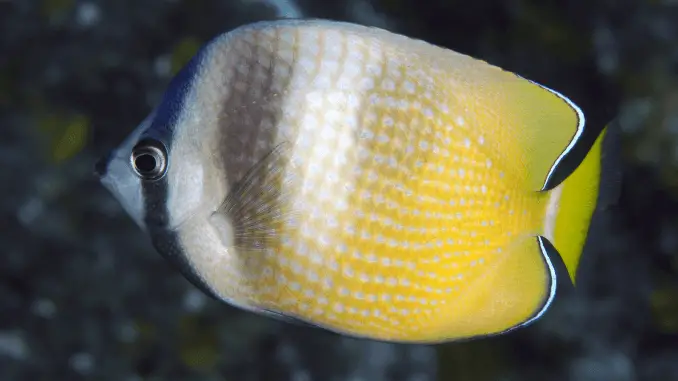
You may have heard that keeping saltwater fish is more difficult than keeping freshwater fish.
Generally freshwater fish are hardier than saltwater fish; however, there are a number of saltwater fish that are quite hardy.
Whilst there are plenty of popular saltwater species, this article only features fish that are suitable for beginners.
Obviously, people have different opinions on what species are suitable for beginners, so for clarity, the following list of fish meet these criteria:
- Don’t require a large tank (larger than 4 feet)
- Hardy
- Not aggressive
TABLE OF CONTENTS
Firefish
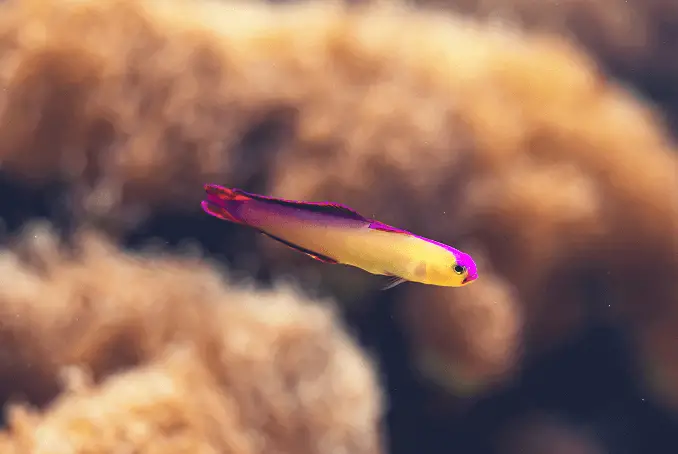 From the family Gobiidae, the Firefish has fantastic coloration, a great personality and a uniquely shaped body.
From the family Gobiidae, the Firefish has fantastic coloration, a great personality and a uniquely shaped body.
It is also known are the Firefish Goby, Nemateleotris Magnifica, Fire Goby, or Fire Dartfish.
Due to its shy and timid nature in the wild, this fish requires plenty of hiding places in rocky crags which it can use if it’s feeling stressed.
This fish requires moderate lighting conditions and a moderate current. It can also jump so the tank will need a securely fitted lid.
Quick Stats
- Min Tank Size: 20 gallons
- Max Size: 3”
- Care Level: Easy
- Temperament: Peaceful
- Diet: Carnivore
Bicolor Blenny
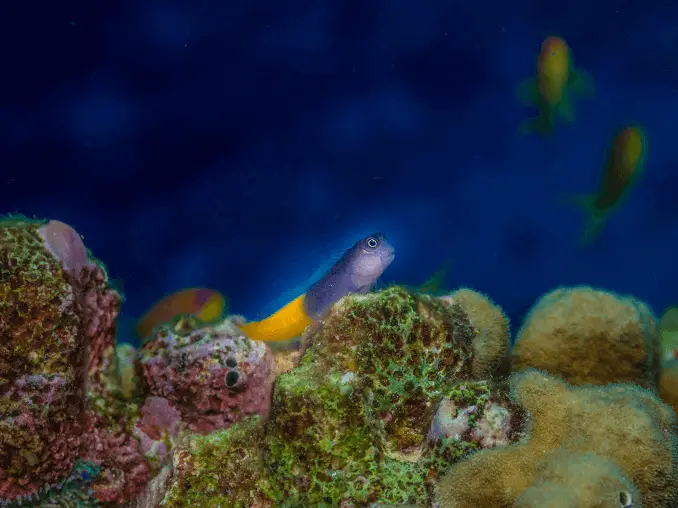 There are plenty of different variations of Blennies, perhaps one of the most popular and widely available is the Bicolor Blenny; otherwise known as the two-colored Blenny.
There are plenty of different variations of Blennies, perhaps one of the most popular and widely available is the Bicolor Blenny; otherwise known as the two-colored Blenny.
They have a brilliant personality, and experience a range of color changes when breeding. The male is typically larger than the female.
This fish requires plenty of scattered rocks for hiding, and although they are usually peaceful tank mates, they are also known to pick on similar species, such as other blennies, dartfish and smaller gobies.
Quick Stats:
- Min Tank Size: 30 gallons
- Max Size: 4”
- Care Level: Easy
- Temperament: Peaceful
- Diet: Herbivore
Lawnmower Blenny
Another Blenny featured in this round-up of popular beginner fish is the lawnmower blenny; also known as the sailfin or algae blenny.
It has a very unique look with a spotted tan color and large eyes, and although it can grow to 5”, it is still a peaceful fish.
Similar to the bicolor blenny, it needs plenty of rocks and caves to hide in, and can also nip at similarly shaped fish, so unless you have a larger tank it’s best to keep them singularly.
Quick Stats:
- Min Tank Size: 30 gallons
- Max Size: 5”
- Care Level: Easy-Moderate
- Temperament: Peaceful
- Diet: Herbivore
Yellow Prawn Watchman Goby
The watchman goby, also known as the yellow prawn or yellow shrimp goby has a yellowy-orange body with bright blue spots on its’ head and fins.
It likes to burrow and needs plenty of room for swimming. Although it’s a relatively small fish, a 30-gallon tank is preferable and a sandy substrate makes burrowing possible.
They are known for jumping, so an aquarium housing this fish will need a tightly fitted lid.
Watchman gobies can be aggressive with their own species unless they are in a mated pair.
Quick Stats:
- Min Tank Size: 30 gallons
- Max Size: 2”
- Care Level: Easy
- Temperament: Peaceful
- Diet: Carnivore
Klein’s Butterflyfish
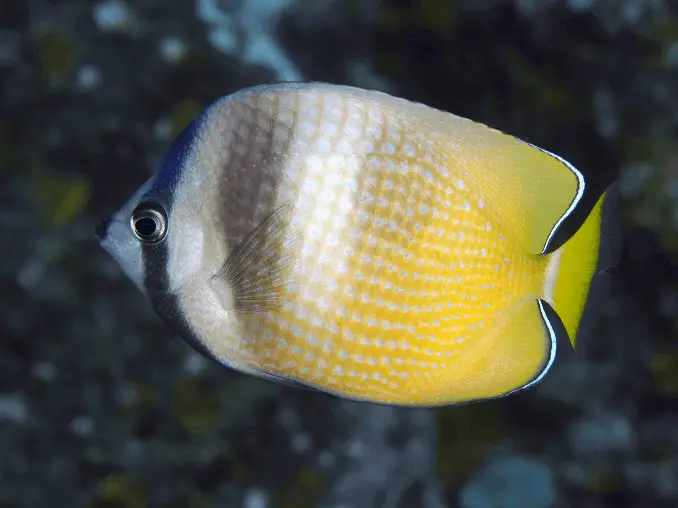 There are not many butterflyfish that are suitable for beginners due to their diet; however, Klein’s Butterflyfish is an exception.
There are not many butterflyfish that are suitable for beginners due to their diet; however, Klein’s Butterflyfish is an exception.
In comparison to other species featured in this round-up, it needs a large tank and can be kept with members of the same species if they’re all introduced at the same time.
This fish will require plenty of open swimming space, and rockwork to hide in. It is not reliably reef-safe so we recommend keeping it in a fish-only tank or live rock.
Quick Stats:
- Min Tank Size: 120 gallons
- Max Size: 6”
- Care Level: Easy
- Temperament: Peaceful
- Diet: Omnivore
Coral Beauty Angelfish
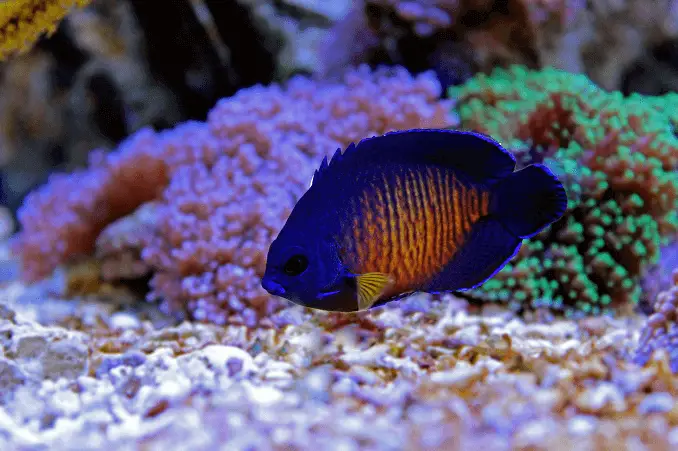 Also known as the Twospined or the Dusky Angelfish, the Coral Beauty is one of the easiest to care for Angelfish.
Also known as the Twospined or the Dusky Angelfish, the Coral Beauty is one of the easiest to care for Angelfish.
It is a truly beautiful fish, with a deep blue body and head, with yellow highlights. The coral beauty is a very active, yet peaceful fish.
They are generally good non-fusser eaters and will graze on algae in your tank so having an established tank is a plus!
Quick Stats:
- Min Tank Size: 70 gallons
- Max Size: 4”
- Care Level: Easy
- Temperament: Semi-aggressive
- Diet: Omnivore
Chalk Bass
One of the smaller and more peaceful basses from the Serranidae family is the Chalk Bass, a hardy fish that is relatively peaceful.
This fish requires plenty of caves and rocky overhangs to hide in and can be kept with many different community fish, as well as their own kind (so long as they’re added at the same time).
During the transition stage to an aquarium, they can be reclusive and are even prone to jumping, so you’ll need to keep a tight lid on your tank.
Quick Stats:
- Min Tank Size: 30 gallons
- Max Size: 3”
- Care Level: Easy
- Temperament: Semi-aggressive
- Diet: Carnivore
Ocellaris Clownfish
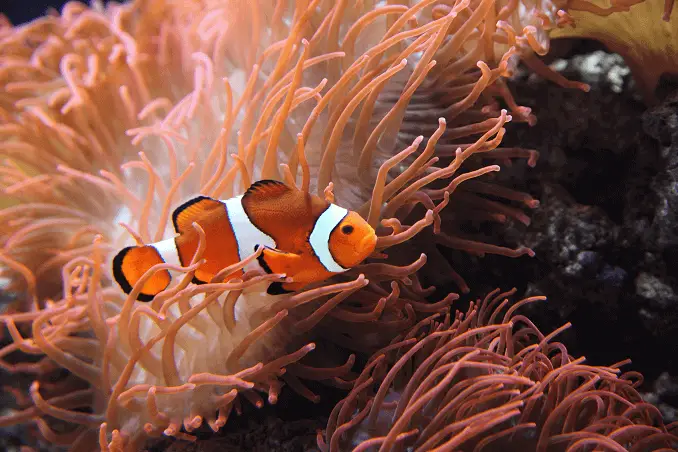 Made all the more popular by the film ‘Finding Nemo,’ this clownfish, a part of the Pomacentridae family, is a beautiful orange color with white bands and black outlines.
Made all the more popular by the film ‘Finding Nemo,’ this clownfish, a part of the Pomacentridae family, is a beautiful orange color with white bands and black outlines.
This hardy fish is a fantastic eater, and is easy to breed in your home aquarium. The female is usually larger than the male and once they pair up they’ll continue to spawn for as long as they live.
They should not be housed with aggressive species; if you house them with anemone they should be kept in a larger tank to suit the size of the anemone.
Quick Stats:
- Min Tank Size: 30 gallons
- Max Size: 3”
- Care Level: Easy
- Temperament: Peaceful
- Diet: Omnivore
Black Molly
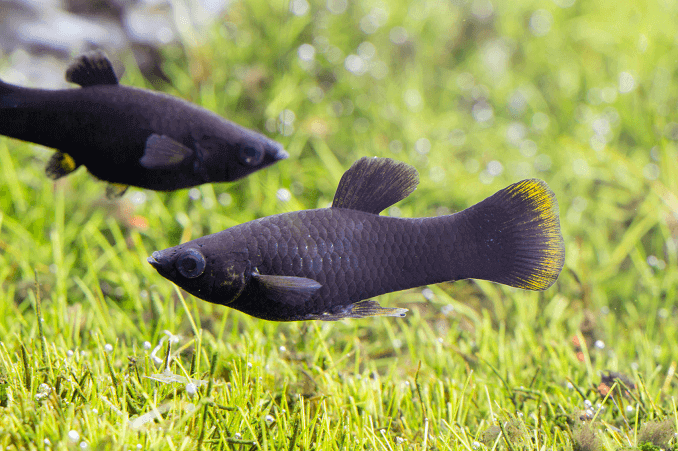 Mollies can be acclimatized to live in either freshwater or saltwater. The black molly is an all-black fish with short fins. The male has a pointed anal fin and larger dorsal fin whereas the female has a pregnancy spot.
Mollies can be acclimatized to live in either freshwater or saltwater. The black molly is an all-black fish with short fins. The male has a pointed anal fin and larger dorsal fin whereas the female has a pregnancy spot.
They prefer a planted tank and a good filtration system due to the amount of waste they create. It is very peaceful and makes a good community fish.
The black molly is a livebearer and will give birth every 60-70 days.
Quick Stats:
- Min Tank Size: 30 gallons
- Max Size: 3”
- Care Level: Moderate
- Temperament: Peaceful
- Diet: Omnivore
Six Line Wrasse
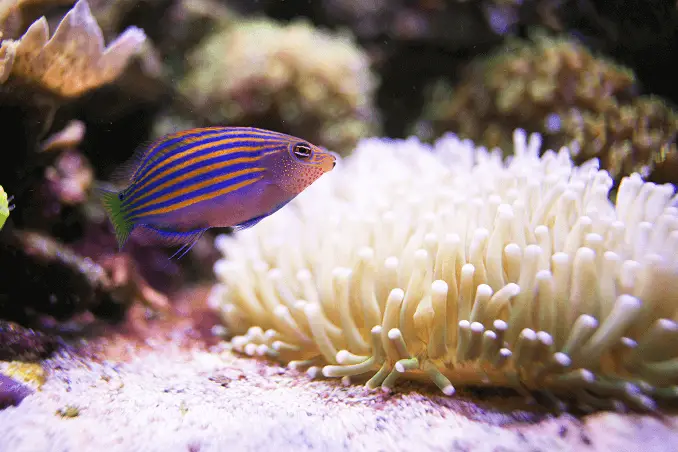 There are a many variety of wrasses within the Labridae family, but the six-line wrasse is one of the most beautiful. It has a vivid coloring, which only intensifies in the male when he is courting.
There are a many variety of wrasses within the Labridae family, but the six-line wrasse is one of the most beautiful. It has a vivid coloring, which only intensifies in the male when he is courting.
This fish requires a peaceful aquarium with plenty of hiding places and a good diet. They are known for feeding on live foods and also unwanted pests.
They are also known to act aggressively to other wrasses, and smaller, more docile fish.
Quick Stats:
- Min Tank Size: 30 gallons
- Max Size: 3”
- Care Level: Moderate
- Temperament: Peaceful
- Diet: Omnivore
Pajama Cardinalfish
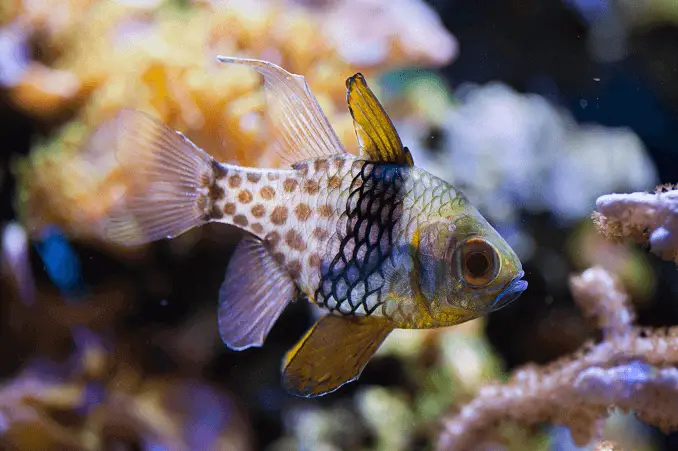 This is a fun looking fish with a splash of different colors. With a greeny-yellow face, large orange eyes and orange dotted back, is has a peaceful nature and makes a great community fish.
This is a fun looking fish with a splash of different colors. With a greeny-yellow face, large orange eyes and orange dotted back, is has a peaceful nature and makes a great community fish.
It is best kept in small groups and should be housed with other peaceful fish. It is quite a slow swimmer and needs plenty of nooks and crannies to hide in. Plants and rocks work well.
If kept in a school, they will form their own hierarchy, however unlike some schools of fish, they are not aggressive to other cardinalfish.
Quick Stats:
- Min Tank Size: 30 gallons
- Max Size: 3 ½”
- Care Level: Easy
- Temperament: Peaceful
- Diet: Carnivore
Blue/Green Chromis
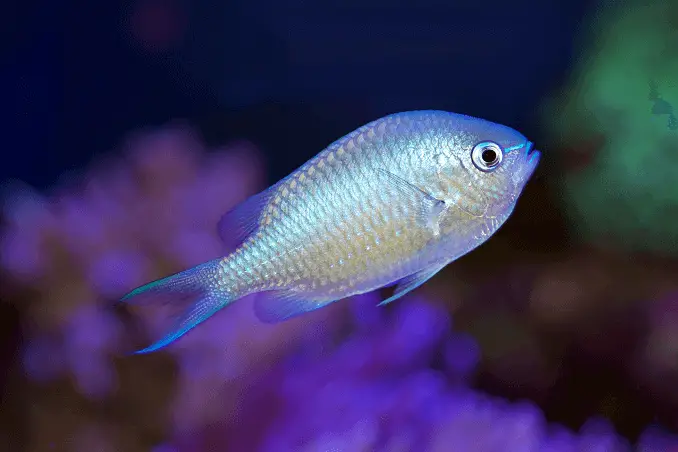 Another favorite amongst reef aquarists is the Chromis viridis. With beautiful colorings, it has a baby blue dorsal fin which fades into green as is reaches its underside.
Another favorite amongst reef aquarists is the Chromis viridis. With beautiful colorings, it has a baby blue dorsal fin which fades into green as is reaches its underside.
It can be kept with almost all community fish, corals and invertebrates due to its very peaceful nature.
In their natural environment, they thrive in a school, and small schools look beautiful in a home aquarium.
Quick Stats:
- Min Tank Size: 30 gallons
- Max Size: 4”
- Care Level: Easy
- Temperament: Peaceful
- Diet: Omnivore
Royal Gramma
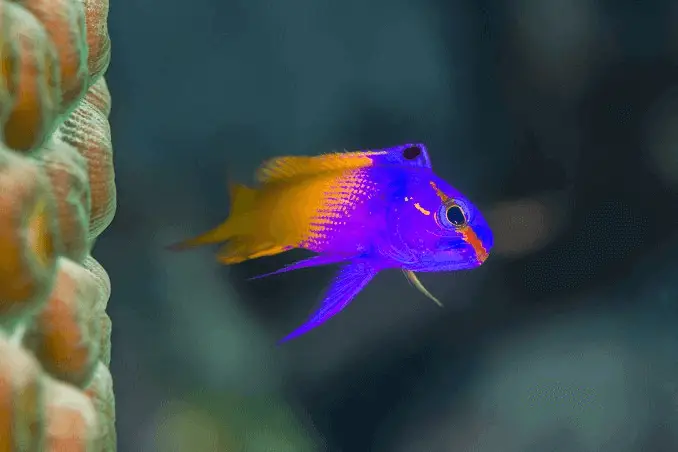 This beautiful fish adds a vibrant splash of color to any community aquarium. Not to be confused with the dottyback, the Royal Gramma has a purple anterior and bright yellow posterior.
This beautiful fish adds a vibrant splash of color to any community aquarium. Not to be confused with the dottyback, the Royal Gramma has a purple anterior and bright yellow posterior.
It grows to a relatively small size and likes to have plenty of rock work and caves to hide in.
Although they are peaceful to other fish in their own size and shape, they can be aggressive to their own type, so keep them singly.
Quick Stats:
- Min Tank Size: 30 gallons
- Max Size: 3”
- Care Level: Easy
- Temperament: Peaceful
- Diet: Carnivore
Flame Hawkfish
Also known as the Red Hawkfish, this bottom-dwelling fish has a vibrant red body, with darker coloration around the eyes and the dorsal fin.
They shouldn’t be housed with small shrimp, and you should be careful housing them with other bottom-dwelling fish such as blennies and gobies.
They like to spend much of their time perching, waiting for prey and so plenty of rock is a must.
Quick Stats
- Min Tank Size: 30 gallons
- Max Size: 4”
- Care Level: Easy
- Temperament: Semi-aggressive
- Diet: Carnivore
Which Saltwater Fish is Right for You?
Most of the species listed here are great beginner fish that do well in community tanks.
The main consideration you need to ask yourself if you’re thinking about keeping one of these species is whether they are compatible with the rest of the fish in your tank.
You’ll probably notice that a few breeds such as tangs, that are well stocked in local fish stores are not included in this article.
This is because they are more difficult to keep, and require more experience.
If you’re just starting off in the saltwater hobby, make sure you get some experience keeping hardy fish first. Saltwater tanks require precise water conditions, and while you might get away with small changes to your water chemistry in a freshwater tank, this can be lethal in a saltwater tank.

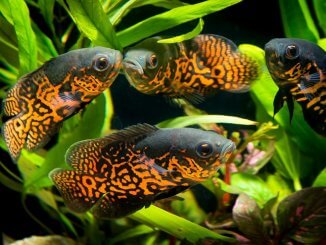
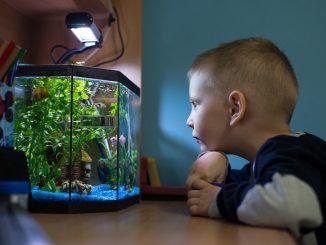
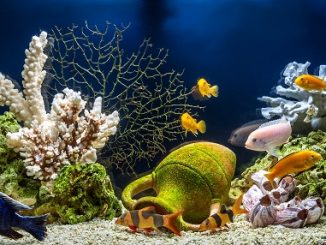
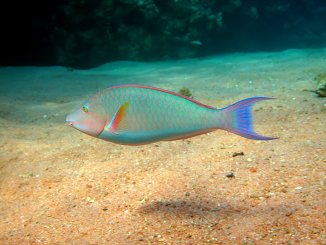
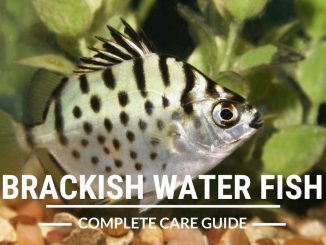

So would the fish listed above would be ok to be combined together?